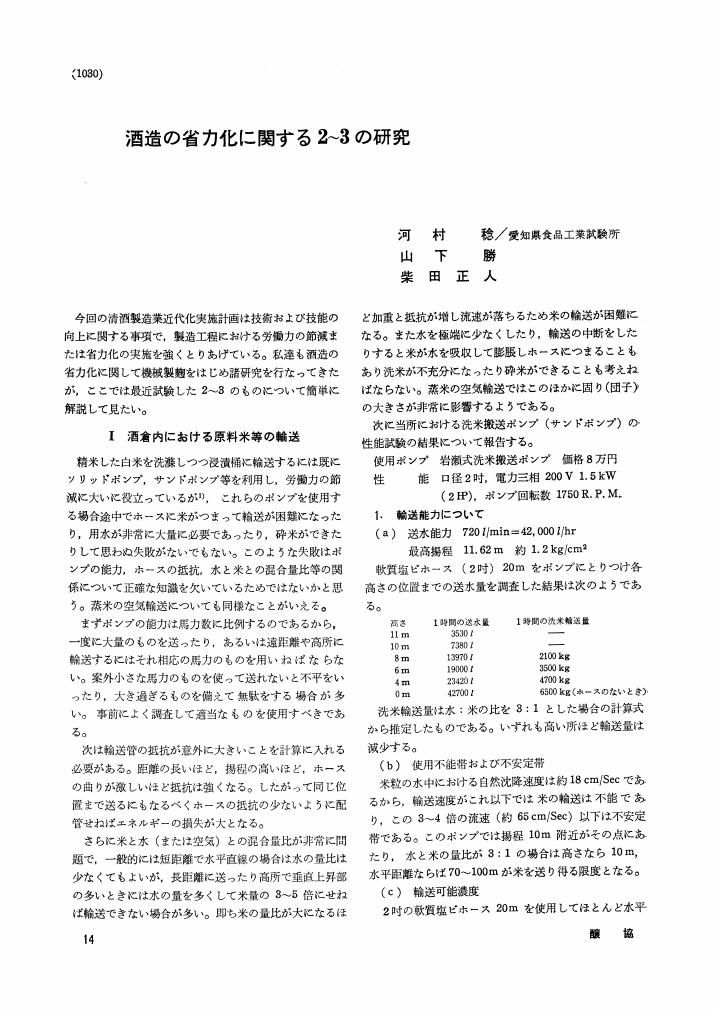- 著者
- 岡崎 良平 難波 宏好 吉田 広幸 岡井 恒 河村 稔
- 出版者
- 一般社団法人 日本ペインクリニック学会
- 雑誌
- 日本ペインクリニック学会誌 (ISSN:13404903)
- 巻号頁・発行日
- vol.15, no.4, pp.407-413, 2008-09-25 (Released:2011-12-01)
- 参考文献数
- 24
目的:ワクシニアウイルス接種家兎炎症皮膚抽出液(ノイロトロピン®,以下NTP)と疼痛疾患治療に使われる非ステロイド性抗炎症薬(NSAID)および抗うつ薬の抗アロディニア作用を比較した.また,NTPとミルナシプランの併用効果についても検討した.方法:9週齢Wistar系雄性ラットを用い,麻酔下でL5脊髄神経の後根神経節末梢側を結紮した.手術28日後に薬物を経口投与し,機械刺激性アロディニアを測定した.NTPとミルナシプランの30%有効用量を求め,アイソボログラムにより併用効果を評価した.結果:NTPは400 NU/kgでアロディニアを抑制した.NSAID(ロキソプロフェン)およびCOX-2選択的阻害薬(セレコキシブ)は100 mg/kgで抑制しなかった.抗うつ薬であるSNRI(ミルナシプラン)は100 mg/kgでアロディニアを抑制したが,SSRI(パロキセチン)は10 mg/kgで抑制しなかった.NTPとミルナシプランとの併用により相加効果が認められた.結論:神経障害性疼痛に対してNTPはSSRIおよびNSAIDより有効であり,NTPとSNRIの併用が有用であることが示唆された.
4 0 0 0 OA 技師の語る吟醸づくり
- 著者
- 畑生 道雄 萱島 昭二 河村 稔 宮入 正躬 蓼沼 誠 秋山 裕一
- 出版者
- 公益財団法人 日本醸造協会
- 雑誌
- 日本釀造協會雜誌 (ISSN:0369416X)
- 巻号頁・発行日
- vol.61, no.7, pp.574-579, 1966 (Released:2011-11-04)
- 著者
- 岡井 恒 岡﨑 良平 吉田 広幸 難波 宏好 田口 一貴 山本 任 三浦 智士 河村 稔
- 出版者
- 日本疼痛学会
- 雑誌
- PAIN RESEARCH (ISSN:09158588)
- 巻号頁・発行日
- vol.25, no.3, pp.179-188, 2010-08-10 (Released:2013-06-22)
- 参考文献数
- 22
- 被引用文献数
- 1
Neurotropin® (NTP), a non protein extract from inflamed rabbit skin inoculated with vaccinia virus, is well known as an analgesic for chronic pain such as low back pain and postherpetic pain. In previous study, we revealed that NTP activated monoaminergic descending pain inhibitory system in SART (specific alternation of rhythm in temperature) stressed animals. To clarify the details of antinociceptive mechanisms of NTP, we investigated the influence of chemical denervation of monoaminergic neurons on the antinociceptive effect of NTP in SART-stressed rats. First, serotonergic neurons of nucleus raphe magnus (NRM) were chemically denervated by injection of 5,7-dihydroxytryptamine (50 nmol / 1 µL / site). Chemical denervation of NRM serotonergic neurons decreased the contents of spinal serotonin but not noradrenaline and dopamine, and decreased nociceptive threshold in rats. SART stress decreased nociceptive threshold in non-denervated rats but not in denervated rats whose threshold was already decreased. NTP (200 NU/kg, p.o.) showed an antinociceptive effect in non-denervated rats exposed to SART stress but had no effect in NRM-denervated rats exposed to SART stress. Next, we denervated spinal noradrenergic terminals by intrathecal injection of 6-hydroxydopamine (1 µmol / 10 µL / site) because some noradrenergic neurons are descending from some supraspinal noradrenergic nucleus to spinal cord. Chemical denervation of spinal noradrenergic neurons decreased the contents of spinal nor adrenaline but not serotonin and dopamine in rats. Similar to denervation of NRM serotonergic neurons, nociceptive threshold was decreased by chemical denervation of spinal noradrenergic neurons. SART stress decreased the nociceptive threshold in non-denervated rats, and that was improved by NTP (200 NU/kg, p.o.). SART stress did not affect the decreased threshold in denervated rats and NTP (200 NU/kg, p.o.) had no effect in denervated rats exposed to SART stress. These results suggest that antinociceptive effects of NTP in SART-stressed rats involve the activation of monoaminergic descending inhibitory neurons.
1 0 0 0 OA 酒造の省力化に関する2~3の研究
- 著者
- 河村 稔 山下 勝 柴田 正人
- 出版者
- 公益財団法人 日本醸造協会
- 雑誌
- 日本釀造協會雜誌 (ISSN:0369416X)
- 巻号頁・発行日
- vol.59, no.12, pp.1030-1034, 1964-12-15 (Released:2011-11-04)
- 参考文献数
- 13

